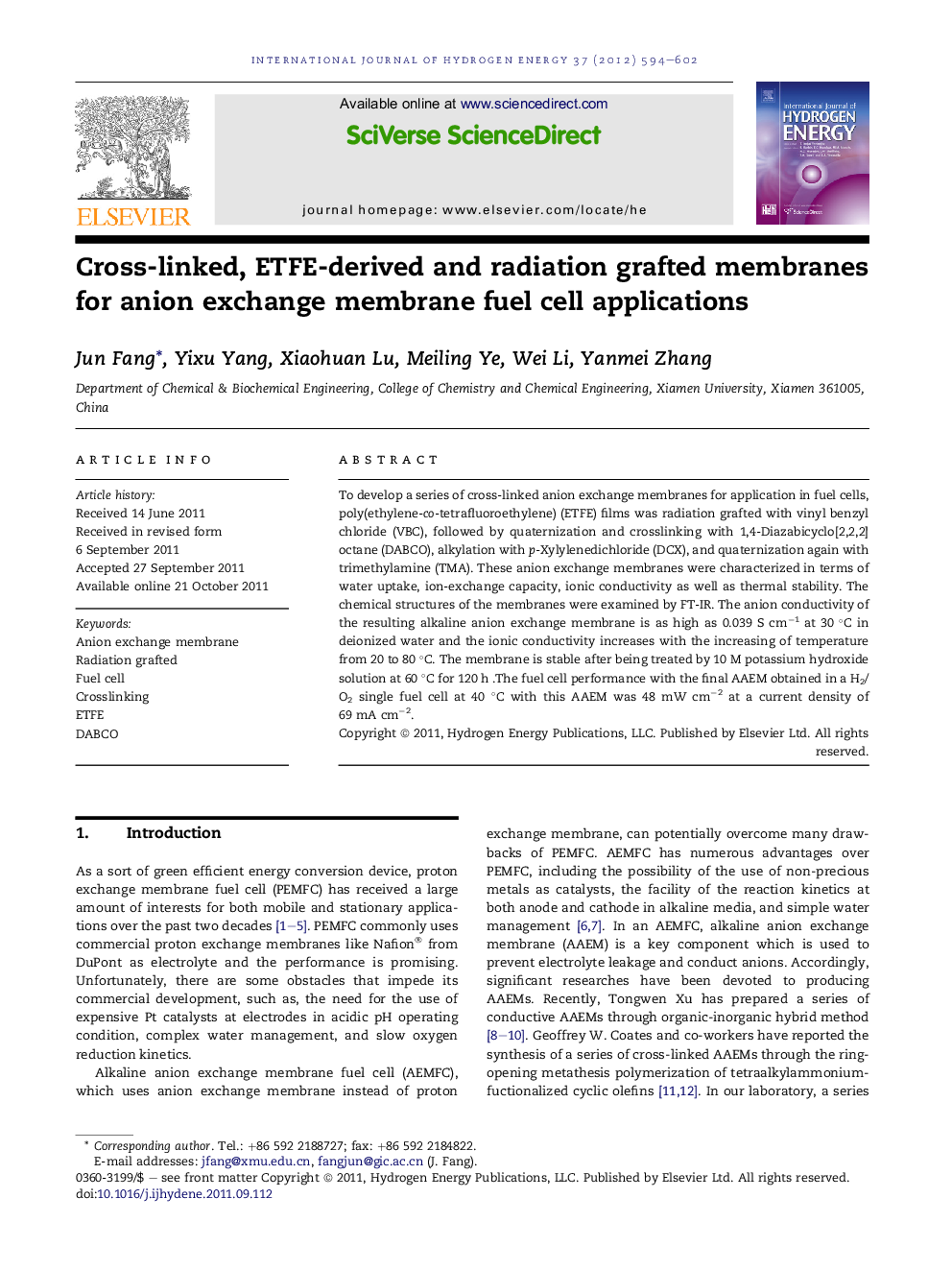| Article ID | Journal | Published Year | Pages | File Type |
|---|---|---|---|---|
| 1277173 | International Journal of Hydrogen Energy | 2012 | 9 Pages |
To develop a series of cross-linked anion exchange membranes for application in fuel cells, poly(ethylene-co-tetrafluoroethylene) (ETFE) films was radiation grafted with vinyl benzyl chloride (VBC), followed by quaternization and crosslinking with 1,4-Diazabicyclo[2,2,2]octane (DABCO), alkylation with p-Xylylenedichloride (DCX), and quaternization again with trimethylamine (TMA). These anion exchange membranes were characterized in terms of water uptake, ion-exchange capacity, ionic conductivity as well as thermal stability. The chemical structures of the membranes were examined by FT-IR. The anion conductivity of the resulting alkaline anion exchange membrane is as high as 0.039 S cm−1 at 30 °C in deionized water and the ionic conductivity increases with the increasing of temperature from 20 to 80 °C. The membrane is stable after being treated by 10 M potassium hydroxide solution at 60 °C for 120 h .The fuel cell performance with the final AAEM obtained in a H2/O2 single fuel cell at 40 °C with this AAEM was 48 mW cm−2 at a current density of 69 mA cm−2.
► ETFE-derived and radiation grafted anion exchange membrane were successfully prepared by two times quaternization method. ► 1,4-Diazabicyclo[2,2,2]octane (DABCO) was used to introduce quaternary ammonium groups and crosslinking structure. ► Elemental analysis and FT-IR results indicated the success of grafting reaction. ► The prepared anion exchange membrane was tested in in-house metal-cation-free H2/O2 fuel cell system. ► The max power density was found to be 48 mW cm−2.
